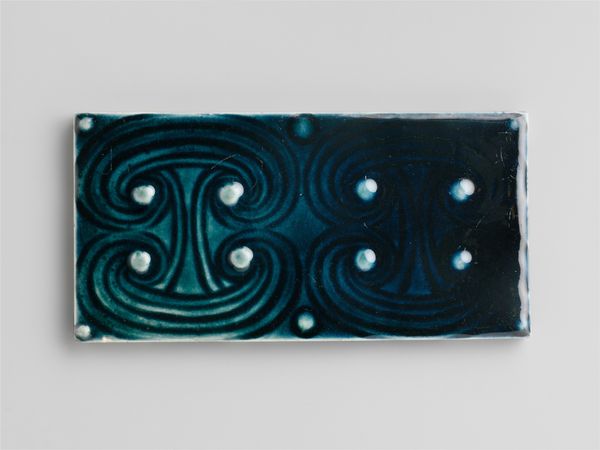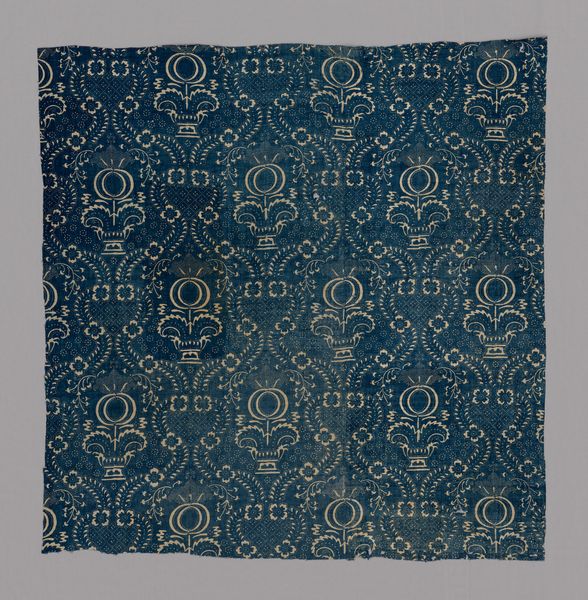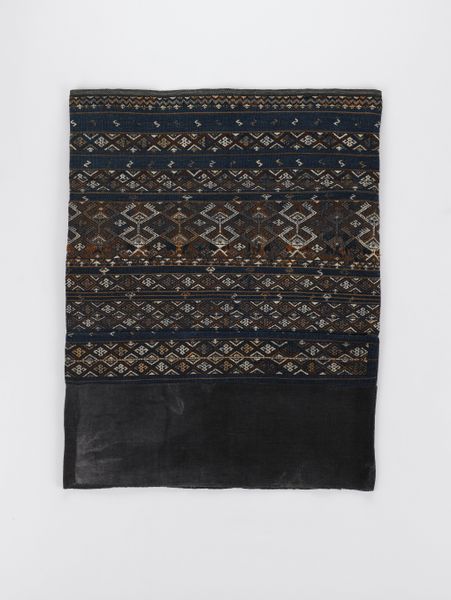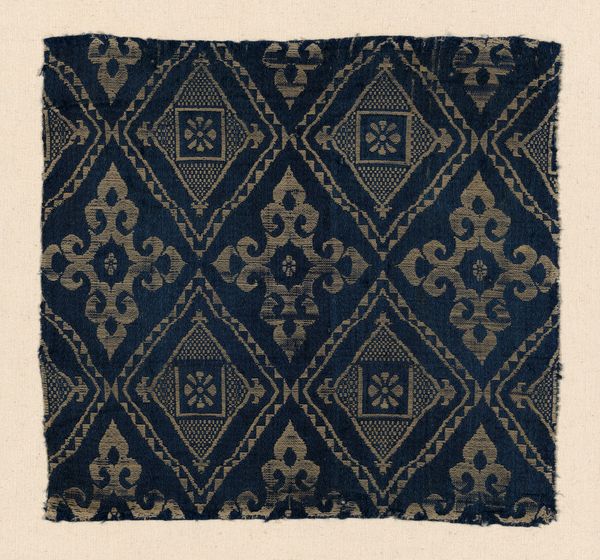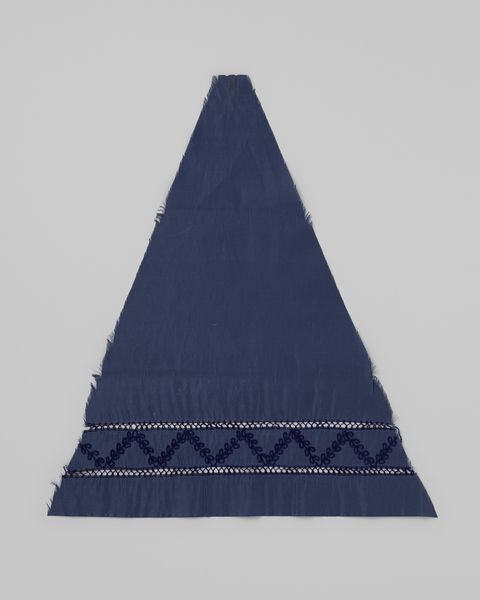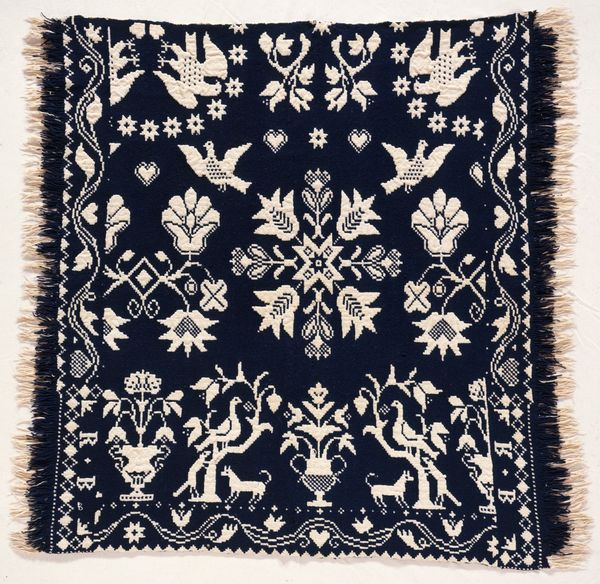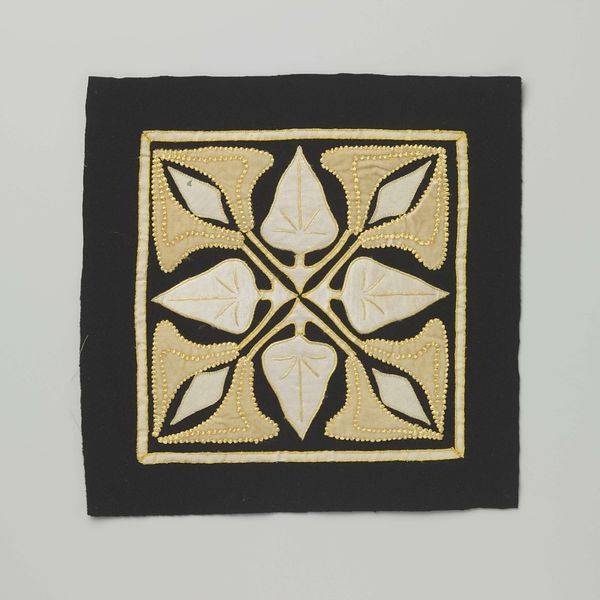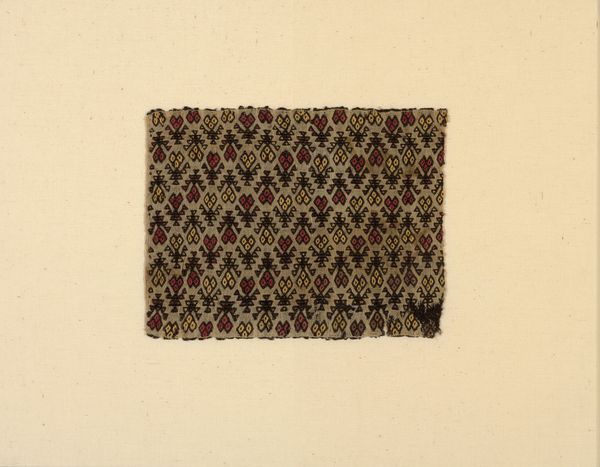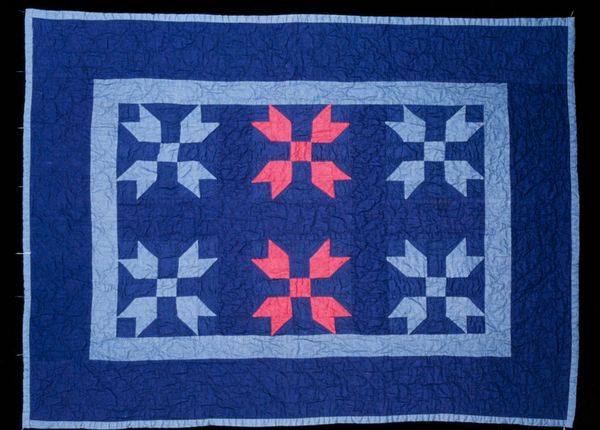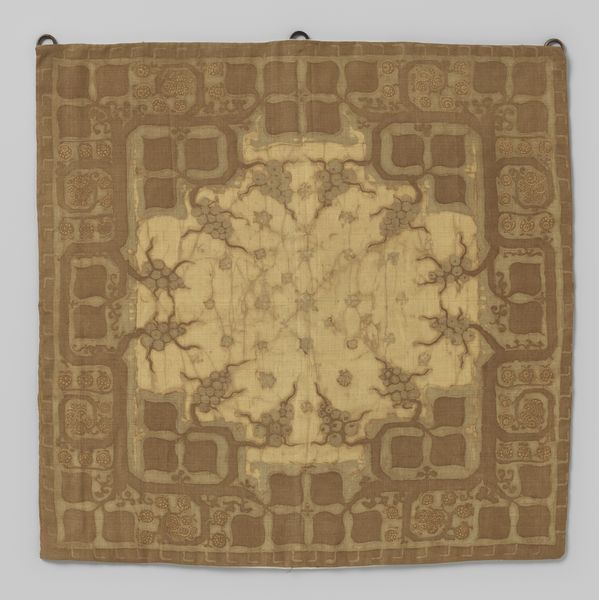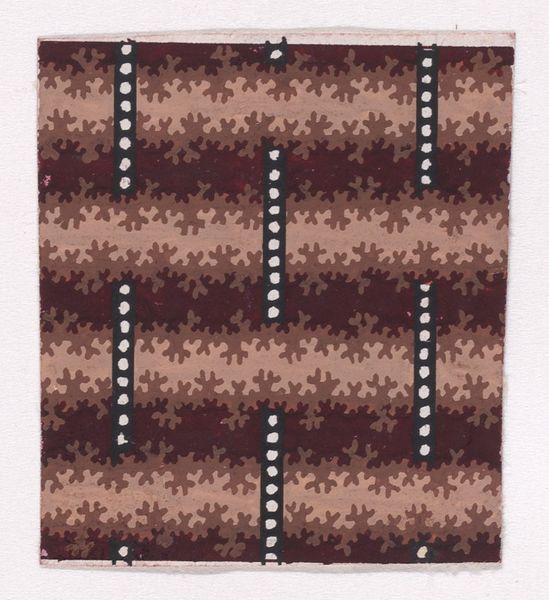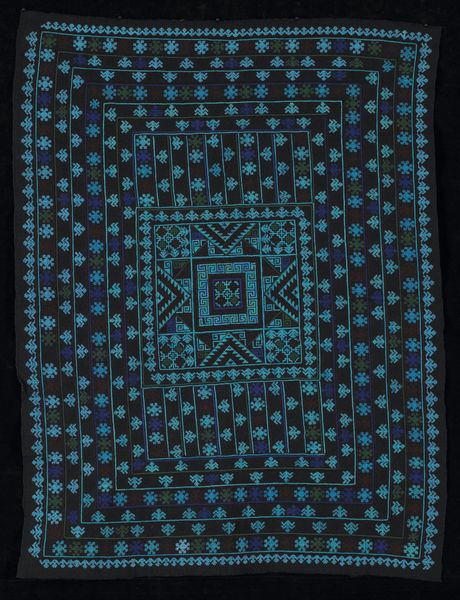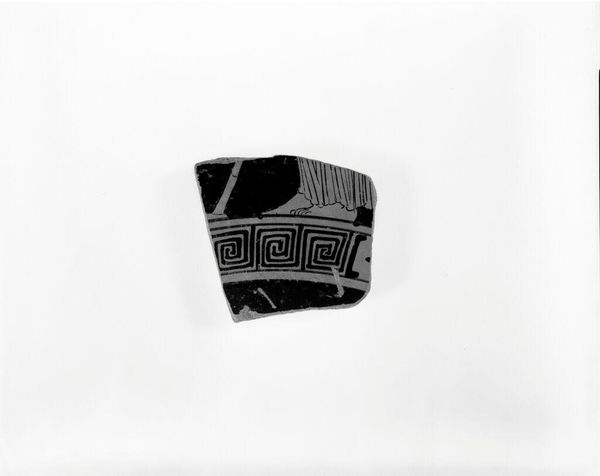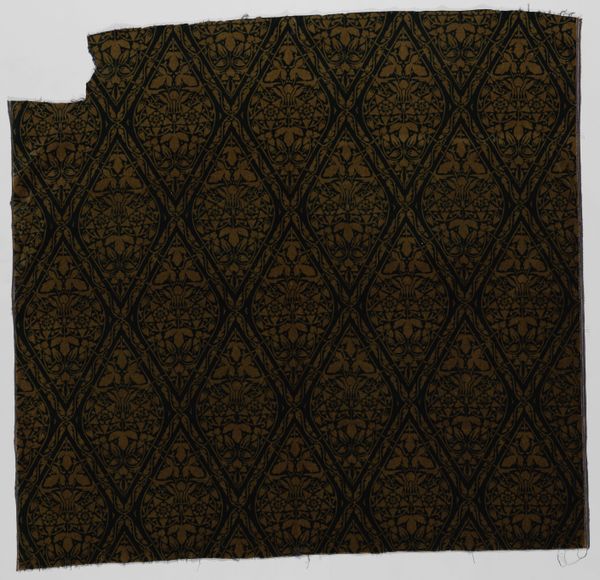
ceramic
#
arts-&-crafts-movement
#
pattern
#
ceramic
#
geometric
#
repetition of pattern
#
united-states
#
pattern repetition
#
decorative-art
Dimensions: 4 1/4 x 4 1/4 in. (10.8 x 10.8 cm)
Copyright: Public Domain
Curator: Oh, there’s something immediately calming about that shade of teal, like looking into deep water. Editor: Indeed. What we have here is a ceramic tile crafted by J. and J. G. Low Art Tile Works, sometime between 1879 and 1884. This particular piece resides in the Metropolitan Museum of Art's collection. Curator: Late 19th century… the heart of the Arts and Crafts movement, isn’t it? You can just feel that dedication to handmade beauty, the elevation of the everyday. It feels so far away from mass production somehow. Editor: Exactly. These tiles, with their repetitive geometric designs, highlight the intersection of industry and artistry. Consider the factory setting: what were the working conditions? How did they achieve that glaze? What about the economic accessibility of decorative items for the rising middle class at the time? These details offer insights beyond mere aesthetics. Curator: You’re making me think of the crafters—individuals really—laboring over each piece, pouring their souls into those small floral diamonds. Imperfect little stars. Imagine that was someone's entire purpose, to glaze tiles. Editor: That focus on the individual artisan is romantic, certainly, but it overlooks the factory context. Was it skilled artistic labor or simple task division? How much creative control did the maker really have in the design and production processes? And where were these tiles intended to be placed? Bathrooms? Fireplaces? Thinking about the intended application influences how we view them. Curator: True. The function shapes the form. And thinking about them covering a fireplace—warming a home… Well, it sends me spinning off into a nostalgic fantasy of Victorian parlors, doesn’t it? Perhaps that’s the lasting magic of Arts and Crafts; they created pieces that make one remember what they could never experience. Editor: Or maybe remember what capitalism has erased—the tangible labor and material networks behind every designed object. This tile then isn't just an aesthetic choice; it's a fragment of social history molded in clay. Curator: Yes. Seeing this unassuming, useful, and somewhat humble object differently… I find that endlessly intriguing. Editor: As do I, especially with regards to our present-day mass production. Thank you for that wonderful exploration.
Comments
No comments
Be the first to comment and join the conversation on the ultimate creative platform.
